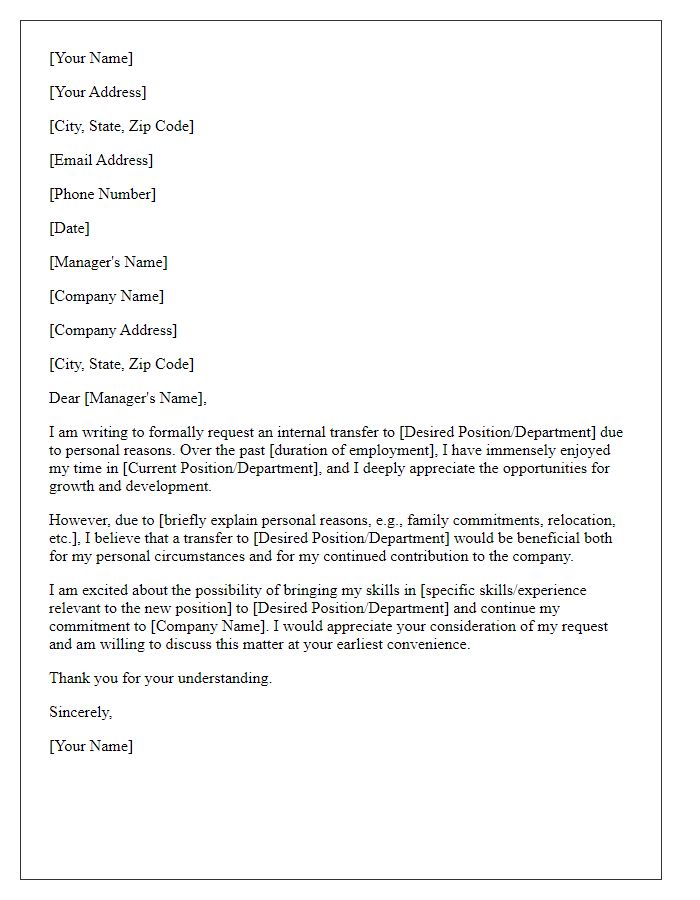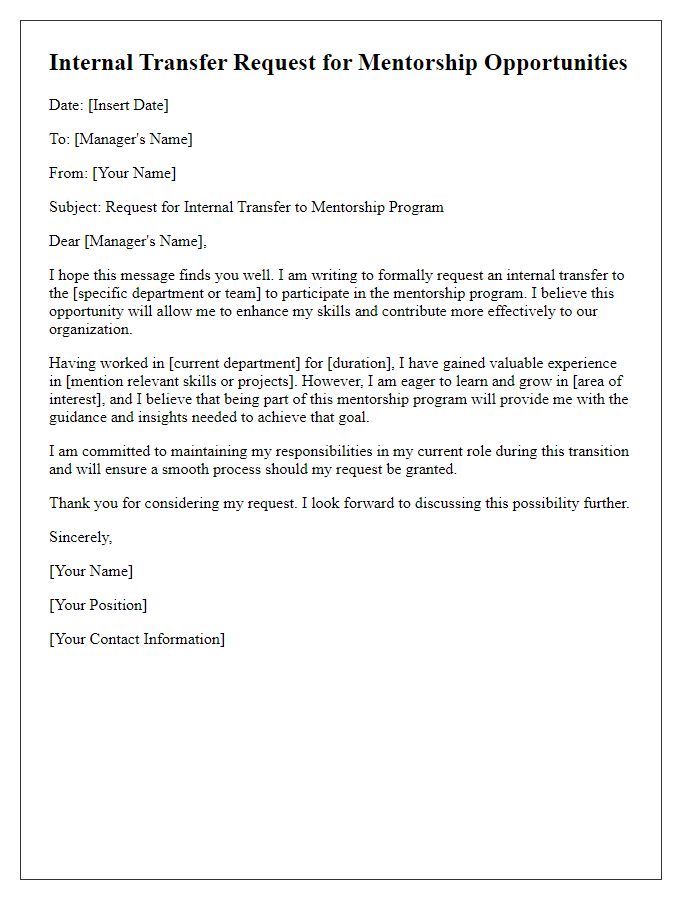If you're contemplating an internal transfer, crafting the right request letter can make all the difference. This letter serves not only as a formal application but also as a chance to express your passion for new opportunities within your organization. You'll want to highlight your current achievements while making a compelling case for why you're the perfect fit for the new role. Curious about how to structure your request effectively? Read on for a detailed guide!

Professional tone and clear subject.
Internal transfer requests allow employees to explore new opportunities within an organization while leveraging their existing skills and experience. When drafting a request, clarity and professionalism in the tone are essential for effectively communicating intentions. A well-structured email includes a clear subject line indicating the purpose, such as "Internal Transfer Request - [Your Name] for [Position/Department Name]." This should be followed by a brief introduction explaining the current role, the desired position, and motivation for the transfer, such as career growth or alignment with personal goals. It is important to express appreciation for the current team and emphasize a desire to contribute positively to the new department. Including specific skills or achievements that correlate with the new role enhances the request's strength. Concluding with an invitation to discuss the request further demonstrates openness and professionalism.
Current position and department.
Internal transfer requests within organizations often stem from various motivations, such as career growth, skill development, and personal preferences. The current position, such as Sales Associate, may reside within the Sales Department, focusing on customer relationship management and performance metrics. This role often emphasizes teamwork, where collaboration with colleagues enhances sales strategies and achieves departmental goals. Departments within a company typically include Human Resources, Marketing, Finance, and IT, each with its own distinct responsibilities and contribution to overall organizational success. A request for transfer should highlight past accomplishments, relevant skills, and the desire for new challenges in a different department, perhaps Technical Support or Project Management.
Desired position and department.
An internal transfer request often involves significant considerations related to career advancement within a company. Positions like project manager in the IT department (focused on software development and team coordination) can lead to improved operational efficiency. Requests should emphasize specific skills and contributions, such as a successful project completion that resulted in a 20% increase in productivity. Departments often require alignment with the company's mission and values, particularly in sectors like finance, marketing, or operations, all of which contribute to overall organizational goals.
Reasons for transfer request.
Internal transfer requests often arise from factors such as career development aspirations, which can enhance skill sets and broaden professional experiences within an organization. Employees may seek transfers to align better with their personal goals or interests, fostering engagement and job satisfaction. Other reasons include seeking new challenges that stimulate productivity and innovation in different departments or roles. Additionally, employees may face personal circumstances, such as relocation to a different city or family commitments, prompting the need for a transfer to maintain a work-life balance. The desire to work with different teams or management styles can also drive internal transfer requests, cultivating a more dynamic workplace culture.
Appreciation and gratitude for consideration.
An internal transfer request highlights an employee's desire to move within an organization, often driven by career development, skill enhancement, or personal circumstances. This process usually involves submitting a formal request to management, detailing motivations for the transfer, and expressing appreciation for previous opportunities. Employees should emphasize their gratitude for support received in their current position, acknowledging teamwork, mentorship, and growth experiences. Providing specific examples of accomplishments within the team can strengthen the request, showcasing commitment and contributions. It is essential to clarify how the new role aligns with career goals while reiterating enthusiasm for continued contributions to the organization.
Letter Template For Internal Transfer Request Samples
Letter template of internal transfer request for a new project opportunity

Letter template of internal transfer request for better work-life balance

Letter template of internal transfer request for enhanced job satisfaction











Comments